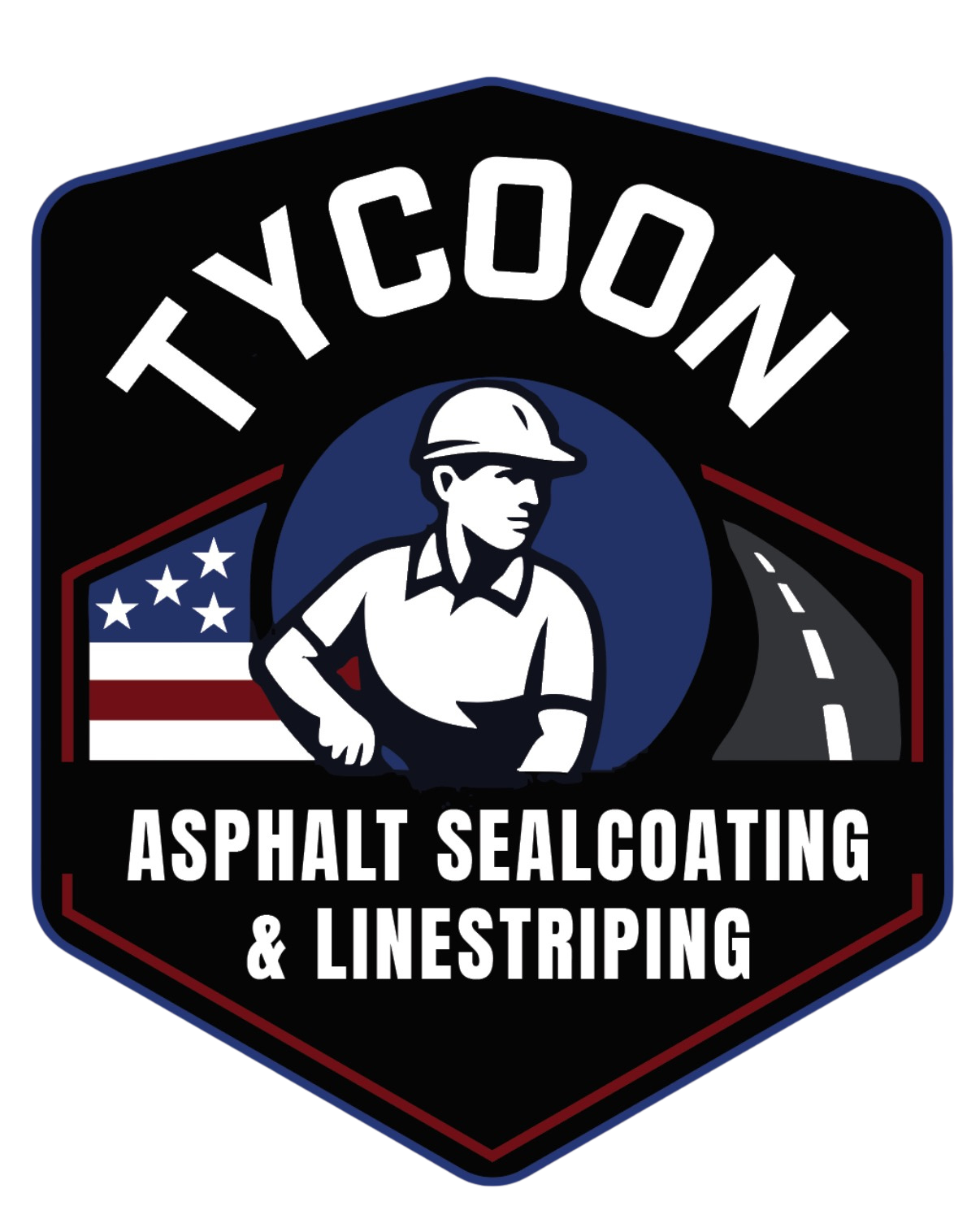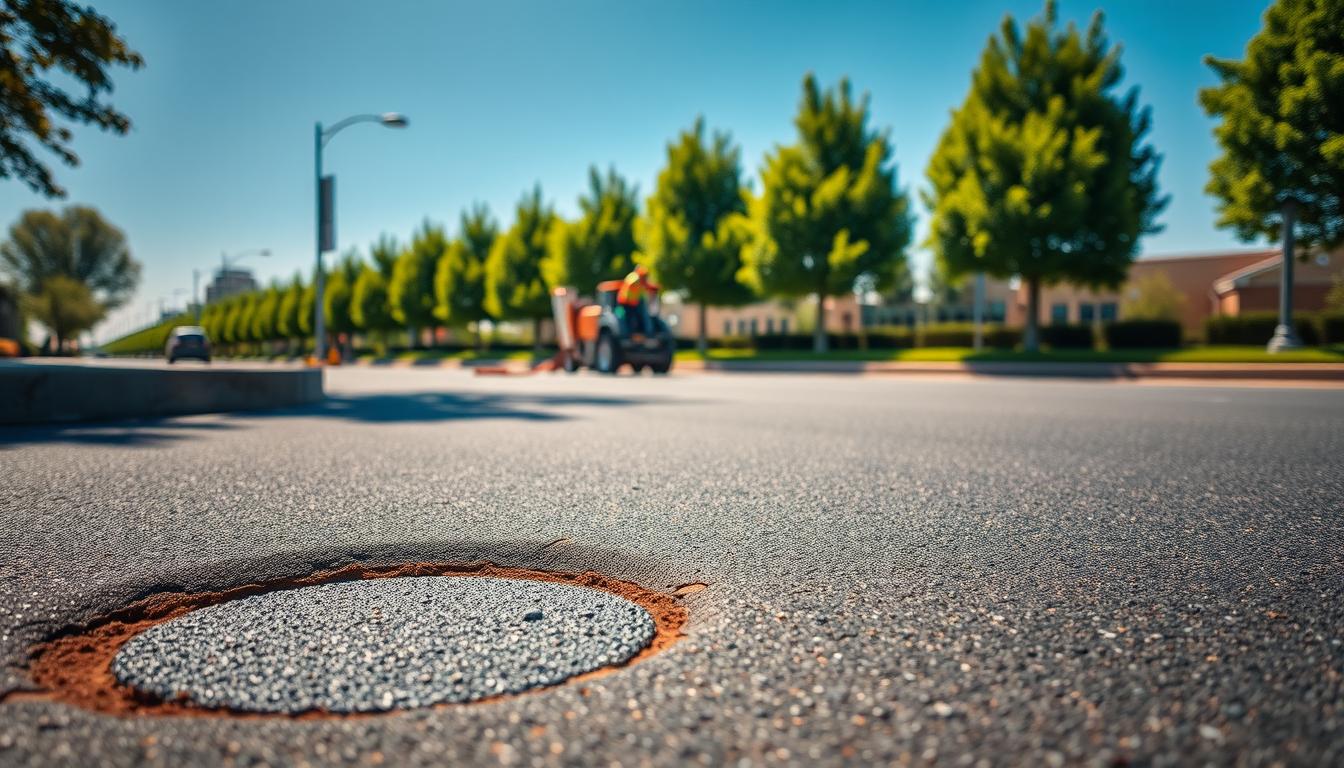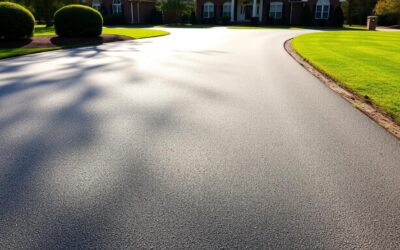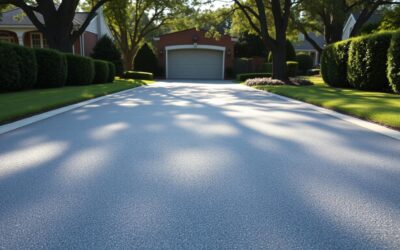We created a local-first guide to help property owners protect pavement and plan costs over the full lifespan of their surface.
In Mecklenburg County, weather and traffic shape how often you should act. Most surfaces get the best value from sealcoating every 2–3 years, with the first coat about 6–12 months after installation.
We’ll walk through core milestones: post-install curing (usually 24–48 hours for light use), routine inspections, quick crack sealing, and drainage checks to prevent standing water.
Follow a proactive plan and you can reduce surprises, keep your curb appeal, and help paved areas reach 15–20 years or more.
Why a proactive maintenance plan matters for Charlotte pavement
We stay proactive because small fixes now save big bills later. When we watch for early wear, cracks and faded markings get fixed before they grow into costly problems.
High traffic zones and heavy weather speed surface breakdown. UV rays oxidize the binder while rain forces water into cracks. Simple protections like timely sealcoating every few years slow that process and extend lifespan.
Keeping surfaces smooth and markings clear boosts safety for drivers and pedestrians. That reduces liability on your property and keeps tenants and customers happy.
Traffic patterns—turning lanes, entrances, and loading areas—need targeted attention. We build inspection checkpoints into a regular plan so we catch issues early and keep predictable costs over years.
Assessing your asphalt surface before you plan
A quick, regular check lets us catch small problems before they grow into big repairs. We set a quarterly inspection routine so driveways, parking lots, and private roads stay safe and usable.
Quarterly inspection routine
We walk each property and note wear, fading, and rough texture. Regular checks reveal cracks and early signs of oxidation that call for treatment.
Documenting what you find
We document cracks by size and location so we can prioritize quick sealing before moisture enters. We photograph standing water and map low spots to avoid future potholes and drainage issues.
Traffic and safety checks
We note parking flow, turning pressure, and high-stress areas to target repairs. We also check for trip hazards, worn markings, and unclear lines that affect safety.
Finally, we keep a simple inspection log per property. That log helps us spot trends, know when to call local crews for compaction or base work, and schedule sealcoating at the right time.
Your asphalt maintenance schedule Charlotte: timelines that work now
Good timing makes all the difference for a long-lasting surface after installation. We lay out clear windows so each task happens when it helps most.
New installation timeline: first 6-12 months and the initial sealcoat
Let a new surface cure for 24–48 hours before light use. Then plan the first sealcoat between 6 and 12 months after installation to lock in protection.
Routine cadence: sealcoating every 2-3 years based on traffic and wear
We recommend a recurring cadence of every 2–3 years. Adjust that interval for heavy traffic lanes or high-turn areas to extend life by years.
Trigger-based tasks: address small cracks immediately to prevent potholes
Seal small cracks at once so water cannot enter and form potholes. Quick fixes save money and keep operations running smoothly.
Seasonal timing: scheduling around Charlotte weather for best results
We align work with milder, dry stretches and avoid rain forecasts and peak UV days. Allow extra cure time for heavy vehicles when needed, and plan around school or retail hours to minimize disruption.
Step-by-step tasks to extend lifespan and protect your investment
These hands-on steps help us lock in protection and avoid costly repairs down the road. We sequence simple tasks so each action builds on the last and gives the best return over time.
Cleaning and stain control
We start with routine cleaning to remove debris and oil. Using asphalt-safe cleaners prevents chemical damage and stops stains from weakening the surface.
Crack sealing and minor repairs
We seal small cracks quickly to keep moisture out. Early repair keeps cracks from widening and turning into potholes.
Sealcoating for UV and water defense
A quality sealcoat layer shields the binder from UV and rain while restoring a uniform finish. We recommend this every 2–3 years based on traffic and wear.
Re-striping and markings
We refresh lines, ADA zones, and safety markings to improve traffic flow and safety in parking areas. Clear markings reduce confusion and accidents.
Curing times and traffic control
After sealcoat or repairs, allow 24–48 hours for light use. We stage cones, signage, and detours to protect fresh work and ensure the right cure time.
Quick checklist: clean and degrease, seal cracks, clear drains and edges, apply sealcoat, and re-stripe. This sequence helps us extend lifespan without overspending.
Local factors in Mecklenburg County that shape your plan
We tailor every plan to the local climate, traffic patterns, and ground conditions we see in Mecklenburg County.
Traffic volume: residential driveways vs. commercial parking lots
Low-use driveways face different wear than busy commercial lots. We set inspection and service frequency by traffic and turning movement.
High-load areas need more frequent crack sealing and spot repairs to limit cracking and edge failure.
Weather and drainage: UV exposure, heavy rain, and standing water
Hot summers and cooler winters stress surfaces. UV speeds binder breakdown and heavy rain highlights poor drainage.
Standing water is a major threat; we correct low spots and clear runoff so water does not accelerate failure.
Materials and base strength: what local paving services consider
Local crews focus on compaction, correct base layers, and proper layer thickness to resist deformation. Good base work reduces crack growth under load.
We also check transitions to concrete and edge erosion around your property so repairs hold up through seasonal swings.
Integrating repairs and paving services into your schedule
Choosing the right time for patching or a full repave keeps operations moving and budgets steady. We plan work to limit downtime and protect your site from bigger problems.
When to patch, resurface, or plan an asphalt paving project
We decide between localized patching and a larger paving project by looking for signs like widespread cracking, fatigue areas, or persistent drainage issues.
If damage is isolated, a patch keeps costs low and restores function quickly. When wear covers large zones, a resurfacing or asphalt paving project gives longer-term value.
Coordinating with local crews for proper base, layers, and compaction
We work with a local company that understands soils and runoff. The process includes site prep, base installation, hot asphalt placement, and compaction.
Confirm materials specs, compaction targets, and staging plans with crews so results last. We also coordinate re-striping and signage right after resurfacing to restore safety and curb appeal.
Budget, timelines, and ROI for Charlotte property owners
A clear budget and a phased timeline let us protect value while keeping lots open for business.
We map a multi-year plan that balances money spent on routine care with the ROI of longer service life and safer operations. Consistent work can extend useful life to 15–20 years or more, which improves your investment over time.
Balancing cost, safety, and longevity across years of service
We show rules of thumb for allocating funds to cleaning, crack sealing, sealcoating, and re-striping every few years. This helps you decide how much money to set aside each year.
Early intervention on small defects prevents costlier structural work later and keeps your investment working for you.
Minimizing downtime for parking lots with phased scheduling
Phased work lets us keep parts of the lot open while crews handle one zone at a time. That reduces disruption to parking and customer flow.
We time projects in shoulder seasons in Mecklenburg County to get better cure conditions and crew availability. When comparing proposals, we scope services so you pay for materials quality, compaction, and proper drainage—not extra overhead.
Keep your surface safe and strong for years to come
Keep small issues small: a short yearly checklist helps your pavement perform better and cost less over time.
We recommend consistent cleaning, quick crack repair, and sealcoating every 2–3 years to extend lifespan to 15–20 years or more. New surfaces get a protective coat at 6–12 months, and allow 24–48 hours before light traffic resumes.
Prioritize high-traffic zones, entrances, and parking lot sections first. Proper compaction, good materials, and the right paving process reduce repeat repairs and edge failures on concrete asphalt areas.
Keep a simple log of tips, cracks found, and money spent. For practical how-to guidance, see our page on how to maintain your aging driveway.
When you’re ready, we can review your site and recommend targeted repair or a full asphalt paving project so your surface stays strong for years.




0 Comments